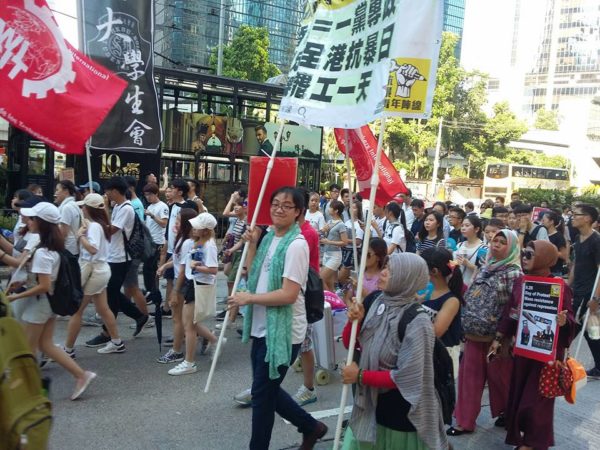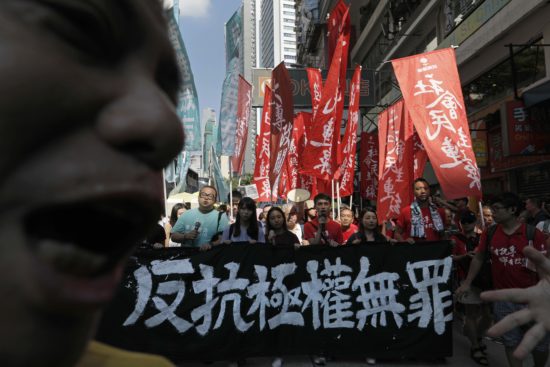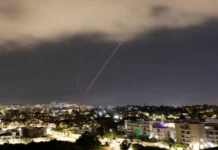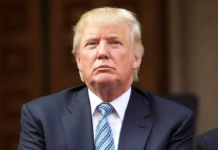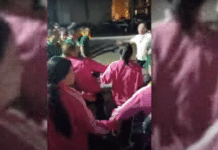The massive August 20 demonstration called at just five days’ notice showed the depths of the popular backlash against the jailing of 16 young activists
Socialist Action reporters
On August 20, up to 140,000 poured onto Hong Kong’s streets in the biggest anti-government protest since the 2014 Umbrella Movement. This incredible demonstration, protesting the imprisonment of 16 young democracy activists, was called at just five days’ notice.
The turnout far exceeded the expectations of the organisers. By responding in such overwhelming numbers the people of Hong Kong provided a stark contrast to the cautious, hesitant approach of the pan-democratic opposition leaders who have been reluctant to call for protests despite the worsening crackdown by the pro-Beijing government. These liberal-leaning leaders have for months been excusing their inaction by referencing the “low spirits” and “downheartedness” of the masses. Clearly, this is not the case.
The imprisonment of the sixteen, including three student leaders of the 2014 movement, has caused the river banks of people’s anger to overflow. Discontent has been building up in the face of a deepening crackdown that is blatantly coordinated to rig future elections (those jailed for three months or more are banned for five years from running in elections). But until now this discontent found no outlet to show itself openly.
The government’s ultra-repressive master plan which includes ejecting elected legislators from the legislature and stepping up arrests and charges linked to political protests is clearly coordinated from Beijing to suit the needs of the Chinese dictatorship. Sunday’s powerful mass response will cause the establishment to reflect: How much further can they proceed with their plan without triggering even more furious mass opposition? As the Wall Street Journal correctly proclaimed in a headline, “Jailing of Hong Kong Protesters Revives Pro-Democracy Movement”. Potentially, yes, the mass struggle for democracy can be revived on an even stronger foundation, if the massive success of Sunday’s demonstration is built upon.
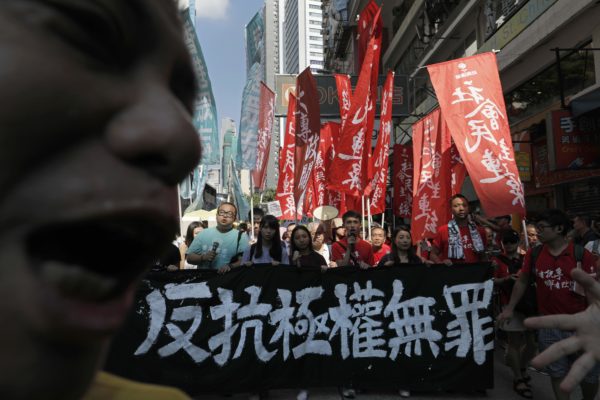
The organisers on Sunday did not give a final estimate of the numbers marching but announced this was the biggest mobilisation since the mass 2014 Umbrella Movement. That was 79 days of occupations and mass protests involving 1.2 million people, or one-sixth of the population. Gauging the size of the crowd on Sunday was made more difficult because – expecting much smaller numbers – the organisers picked Wan Chai’s Southorn Playground, a not-so-big area, as the assembly ground.
The crowd marched through searing 36 degrees sunshine to the now infamous Court of Appeal, where sixteen young people were sentenced to between six and 13 months in jail at two outrageous “retrials” last week. As people left to go home, large numbers were still pouring out of the subway to join at the starting point.
The police, who notoriously downsize anti-government protests in Hong Kong, issued an estimate of 22,000 participants. As a rough guide, real crowd numbers are usually four to five times higher than the police figures.
Courts ‘mainlandised’
Sunday’s demonstration was truly historic for many reasons. It was the first ever mass protest march against a court decision – showing how the government’s use of the courts as a political tool has shaken illusions in the “independence” of the judiciary. As pro-government apologist Alex Lo, in the South China Morning Post, commented: “Whether they genuinely believe it or not, many are now shouting, ‘The rule of law is dead’. The claim is that our courts have turned ‘red’ or are being ‘mainlandised’.” Yet, this is exactly how things are seen today, based on the courts’ blatantly political actions in jailing the sixteen and opening the door to further jailings.
The government of Chief Executive Carrie Lam Cheng Yuet-ngor has been thrown onto the defensive, and is attempting to portray itself as a victim of unfair criticism. There are no “political prisoners” in Hong Kong Lam insists, and it’s hurtful to suggest any political agenda behind the court rulings. But the intervention of the masses has robbed these pitiful excuses of any credibility. Nobody believes this – not the government’s hardcore “blue ribbon” supporters, who want and expect the courts to carry out the political repression, nor the majority of ordinary people who see through Lam’s attempt to hide behind a judiciary which increasingly implements Beijing’s orders. One government advisor, the lawyer and former pan-democratic politician Ronnie Tong Ka-wah, has ludicrously claimed that criticising the court rulings could itself be a punishable crime as “contempt of court”.
The pan-democratic leaders’ attempts to sit on the fence and try to reach accommodation with Lam’s government are now made more difficult. Thanks to the intervention of the masses the stakes have also been raised for the government in following through with further harsh jail sentences against activists, which is clearly its plan. The spontaneous mobilisation on Sunday is a warning of what could happen if more disqualified legislators are sent to jail in order to ban them from running for re-election.
It is also very significant that Sunday’s march was initiated by smaller more radical parties and groups including the left-leaning League of Social Democrats and the student-led Demosisto. The main pan-democratic organisations were forced to follow. This confirms what Socialist Action (CWI in Hong Kong) have argued, that the ‘radicals’ can get a mass response to resist the repression if they take the lead and initiate action, instead of feeling dependent on the more conservative pan-democrats.
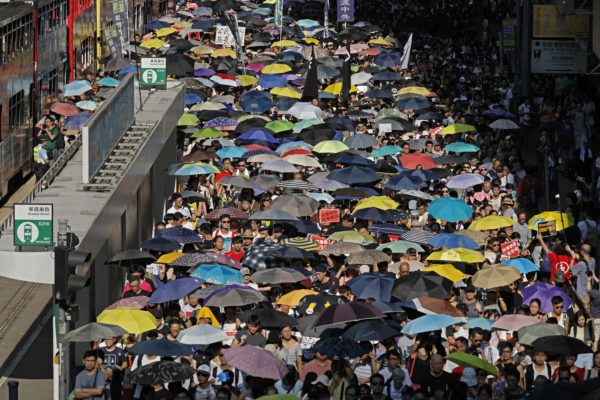
Further action
The urgent question now is how to follow up with further action. The strategy of the government (i.e. Hong Kong and more importantly Beijing) is to ride out the storm of anger, calculating that the pan-democratic leaders are in no mood to fight and will now allow the situation to cool again. Socialist Action believes there is a historic opportunity to rebuild the democratic struggle now, we cannot allow the mass anger and readiness to struggle to dissipate. But that needs a clear plan of escalating mass action to be put forward.
This leaflet from Socialist Action and Youth Against Repression was distributed in several thousand copies at the August 20 demonstration.
The leaflet outlines our suggestions for how the democracy movement can be rebuilt and what should be the next steps. Our banners and material focused on the need for a one-day strike to be called as the next step, at least starting in the schools and universities to link together the various struggles and introduce what for Hong Kong would be a new method – the strike weapon – in the struggle for democratic rights. Socialist Action also stressed the need to link the democracy struggle to the fight against capitalism with its housing crisis and falling living standards, as well as linking to the struggle against dictatorship inside China.
